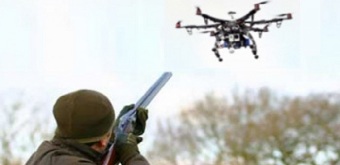Embedded within the FAA Reauthorization Act of 2018 signed into law by President Donald Trump last week was a provision that gives federal authorities the ability to shoot down or otherwise disable drones flying inside U.S. borders. The provision, dubbed as the “Preventing Emerging Threats Act,” specifically gives the Department of Homeland Security and the Department of Justice authority to use counter UAV technology to disable drones that pose a threat to buildings or other assets.
In addition, the legislation also directs DHS to evaluate emerging threats that drones may pose to state or private critical infrastructure and domestic airports.
“By including the Preventing Emerging Threats Act in the FAA reauthorization bill, Congress has provided federal law enforcement authorization to counter the malign use of drones. This is a necessary first step in addressing the growing threat posed by drones in the hands of terrorists and criminals,” Sen. Ron Johnson, Chairman of the Homeland Security and Governmental Affairs Committee, said in a statement.
The evolving threat posed by malicious drone technology is quickly outpacing the federal government’s ability to respond. Transnational criminals use drones to identify security gaps in order to sneak into the country undetected. Smugglers use drones to bring illegal drugs across the border. Terrorist groups aspire to use armed drones against our homeland and U.S. interests and have already deployed such devices abroad to surveil, disrupt, and kill,” she said.
Nielsen continued: “Existing legal constraints and statutes have prohibited the Department of Homeland Security from addressing these drone-threat scenarios and protecting the American people. The Department’s lack of authorities also prevented us from testing truly needed drone-defense technologies. The Congress took a major step forward to address these vulnerabilities. The Department can now begin to address these vulnerabilities and stop nefarious actors from exploiting them.”








